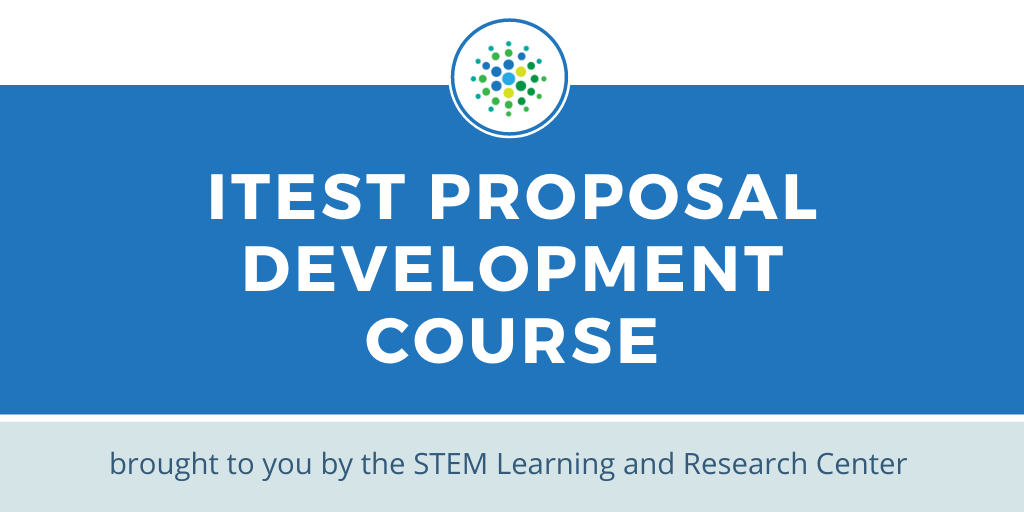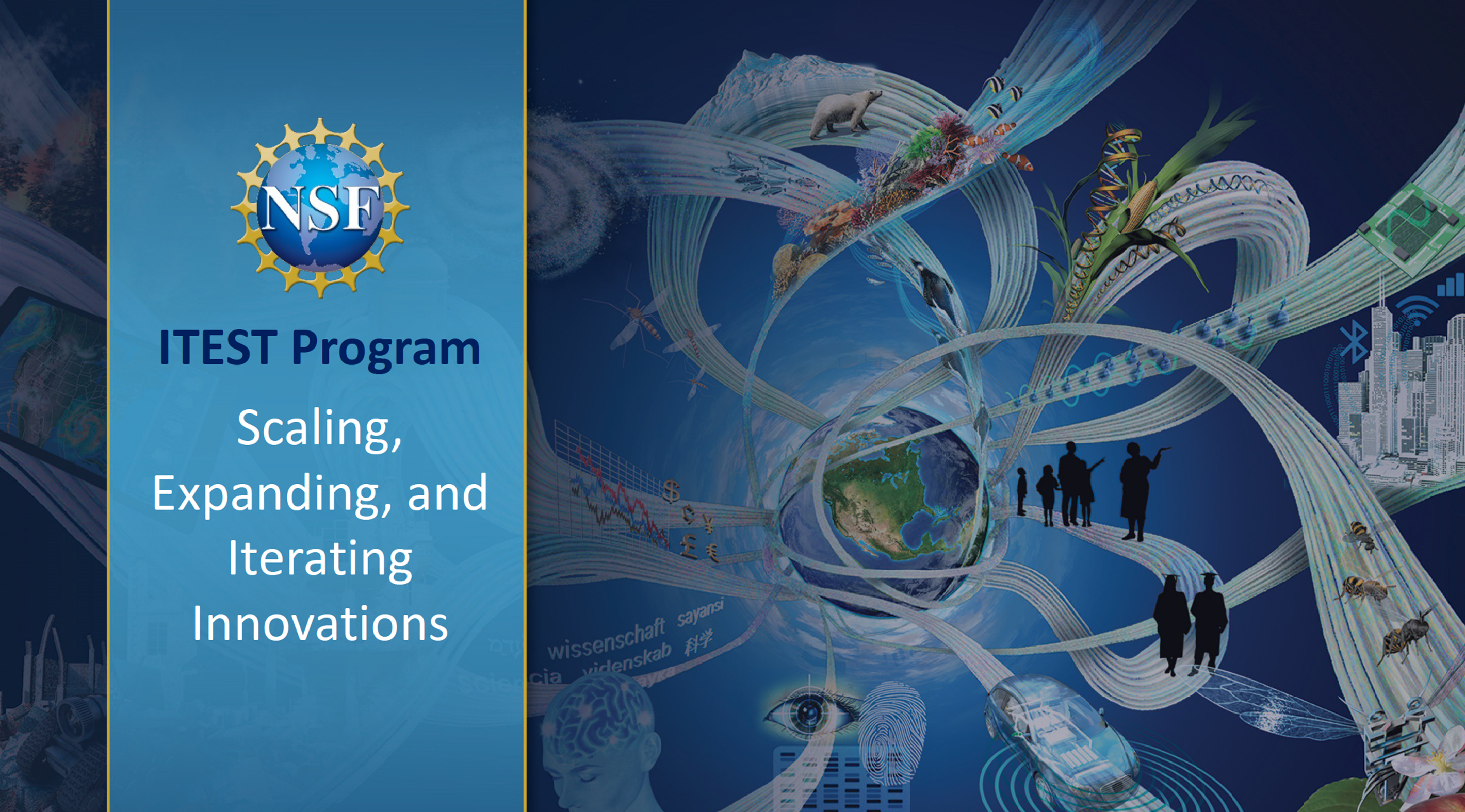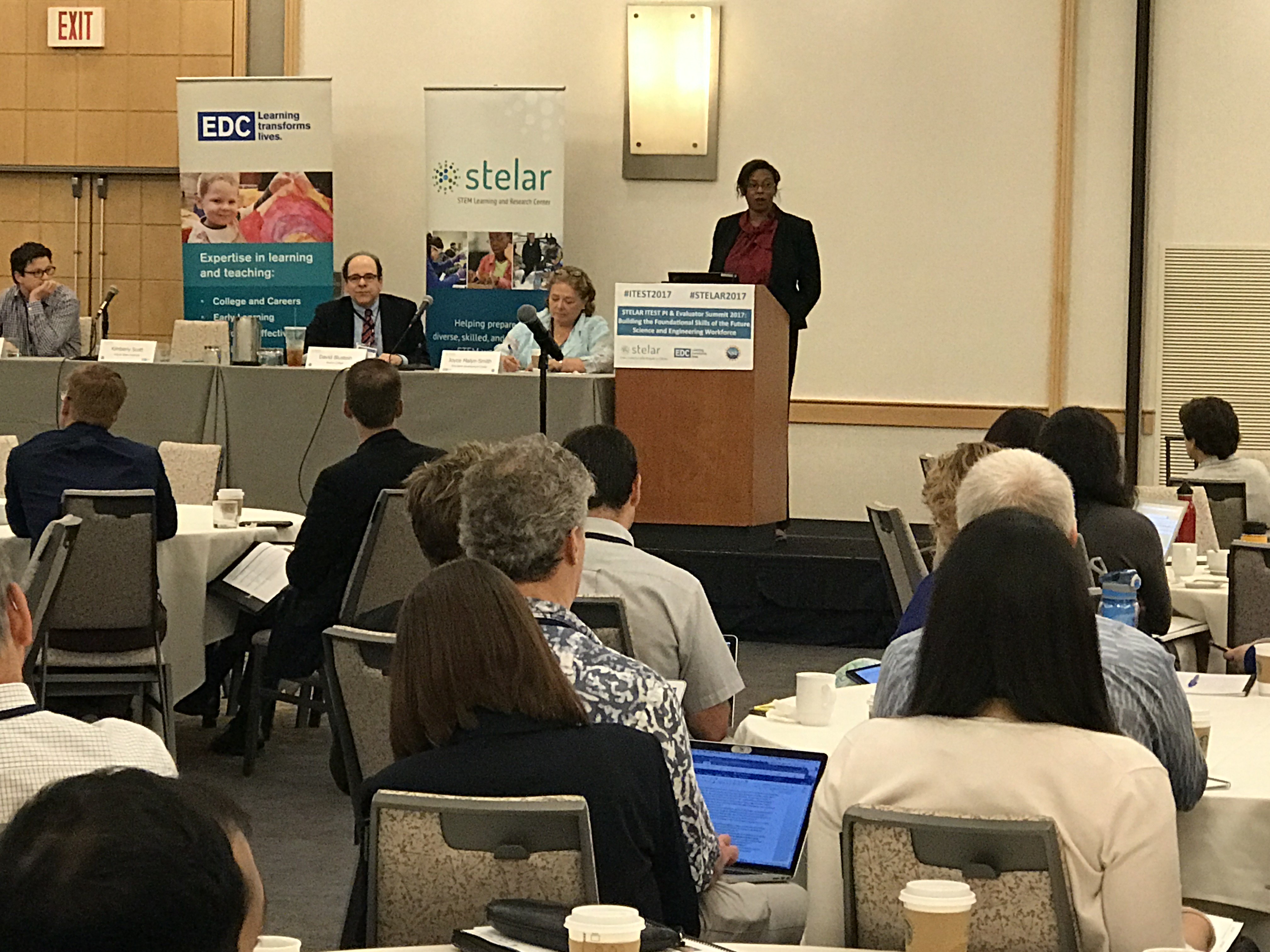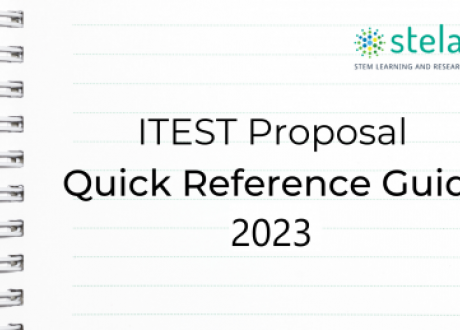
ITEST Proposal Development Resources
This collection was developed by STELAR to assist educators, researchers, and organizations in preparing strong proposals for NSF ITEST program. While the funding opportunity that inspired these resources has since concluded, the materials continue to serve as a rich reference for anyone interested in proposal design, STEM education innovation, and the broader goals of NSF supported initiatives.
New to ITEST?
The ITEST Proposal Development Course is a free, self-paced, online course in which novice NSF proposal writers learn to develop a full proposal for the NSF ITEST program.
Proposal Supports
Prepare to Scale, Expand, and Iterate your STEM and ICT Learning Innovations
If you are considering a proposal for the Scaling, Expanding, and Iterating Innovations (SEI) project type, this page will share webinars and resources developed to help!
NSF ITEST Conference & Workshop Proposals
ITEST supports conference or workshop projects aimed at advancing the ITEST program goals, objectives and pillars as described in the solicitation.
RELATED VIDEOS
On May 25, 2023, STELAR hosted a webinar on the Innovative Technology Experiences for Students and Teachers (ITEST) Program’s Solicitation (NSF 22-585). During this webinar, ITEST Program Officers Alicia Santiago, Leilah Lyons, and Robert Russell
The National Science Foundation published NSF 23-115, “Advancing Microelectronics Education” in May 2023 in response to the CHIPS and Science Act of 2022 (CHIPS Act). This Dear Colleague Letter (DCL) encourages submission of proposals for projects
Developing your Proposal
The resources listed in the tabs below provide valuable information to help you develop a competitive ITEST proposal.
ITEST Program Overview
Innovative Technology Experiences for Students and Teachers (ITEST) Program Solicitation (NSF 22-585)
ITEST is an applied research and development program with goals to advance the equitable and inclusive integration of technology in the learning and teaching of science, technology, engineering, or mathematics (STEM) from pre-kindergarten through high school. The program’s objective is to support all students’ acquisition of the foundational preparation in STEM disciplines. Preparation for the current and future workforce is increasingly dependent upon the application and use of technology and computing.
NSF Proposal & Award Policies & Procedures Guide (PAPPG)
The NSF Proposal & Award Policies & Procedures Guide (PAPPG) is comprised of documents relating to the Foundation's proposal and award process for the assistance programs of NSF. Within the document, Chapter II is devoted to Proposal Preparation Instructions. This document should be referred to alongside the program solicitation.
ITEST Snapshot 2022: An Overview of NSF's ITEST Program
The ITEST Snapshot provides an overview of the National Science Foundation's ITEST Program. The data for this report was derived from NSF's Award Search database, and project survey data collected by STELAR, providing a high-level overview of the program as a whole.
ITEST Portfolio Overview 2022
This ITEST Portfolio Overview captures the ITEST program's current projects. The information included was curated with new ITEST proposal writers in mind so that you can become more familiar with the program and current project trends.
Develop a Robust Research Design
Common Guidelines for Education Research and Development
The Common Guidelines for Education Research and Development describes the National Science Foundation (NSF)'s and the U.S. Department of Education (ED)’s shared understandings of the roles of various types or “genres” of research in generating evidence about strategies and interventions for increasing student learning.
Companion Guidelines on Replication & Reproducibility in Education Research
A Supplement to the Common Guidelines for Education Research and Development
Checklists for the Common Guidelines for Education Research and Development
This document includes six checklists created by the Evaluation Resource Center for Advanced Technological Education (EvaluATE). These checklists may be used by researchers and evaluators to check for adherence to the National Science Foundation's Common Guidelines.
ITEST Instrument Database
Beginning in 2009, the ITEST resource centers (LRC and STELAR) asked active ITEST projects to report their use of externally developed and reliable instruments to collect data on their project outcomes.The STELAR website now houses a database of instruments. All of the instruments listed were used to some extent by at least one ITEST project. The ITEST project is listed under the "Related Projects" heading on the instrument's page. Only instruments that could be located online are included in the database.
Reach Underserved Populations
Leveraging Student Strengths in STEM: Tips for ITEST Proposal Writers
When describing underserved and underrepresented groups in STEM education research there has traditionally been a deficits-based approach, focusing on the challenges that new interventions will help the students overcome. While it is essential that your proposal addresses student challenges, it is equally important to also thoroughly describe the ways in which your work will incorporate strengths-based approaches. The latest research has shown that strengths-based approaches are crucial to student success, and are essential to promoting equity in STEM education.
Promising Approaches to Broadening Youth Participation in STEM
This paper, based on a review of over 200 publications related to approximately 110 ITEST projects, seeks to respond to the broadening participation question in the ITEST solicitation. While all ITEST projects include “broadening participation” as a central goal, we found that publications relating to 43 projects contained specific information on broadening participation. Of those, publications relating to 25 projects had “broadening participation” as the primary focus. Here, we present the range of strategies that project teams employed by highlighting some of those 25 projects.
STELAR Webinar: Strategies for Increasing Diversity in STEM Learning Environments
During this webinar we heard from ITEST projects that are developing innovative program models to successfully recruit, retain, and engage youth from underrepresented communities in authentic STEM learning experiences.
ITEST Data Brief: Project Strategies to Engage Underrepresented Populations
ITEST Data Brief Volume 2, Issue 1, January 2015
ITEST Data Brief: ITEST Participants - Reaching Underserved and Underrepresented Groups
ITEST Data Brief Volume 1, Issue 3, June 2012
Develop the Workforce of the Future
Building the Foundational Skills Needed for Success in Work at the Human-Technology Frontier
The proliferation of new technologies has changed the way we live, learn, and work. Although the future of work is unclear, thought leaders, including the National Science Foundation (NSF), assert that artificial intelligence, the Internet of Things, robotics, and machine learning will be ubiquitous in tomorrow’s workplaces.
K–8 STEM Career Competencies: Developing Foundational Skills for the Future of Work
This framework identifies 10 foundational career competency areas correlated to characteristics of future work at the Human Technology Frontier and what thought leaders in the field believe successful workers in those environments need to know and be able to do. It is meant as a guide for teachers interested in helping their students develop the foundations of skills, knowledge, and abilities needed to be successful in life when they exit formal schooling. Many of the suggested competencies may already be included in the curriculum or pedagogy in K-8 classrooms.
Journal of Science Education and Technology Special Issue - Stories from ITEST: Inspiring Young People to Pursue STEM Careers
The ITEST program has enabled creativity, experimentation, and cultural responsiveness in STEM education and workforce development and broadened participation in STEM initiatives to Native American communities, underresourced urban communities, girls, and populations underrepresented in STEM fields. By approaching research and evaluation with flexibility and resourcefulness, the authors provide empirical evidence for the value of innovative approaches to STEM education that promote STEM interest and career-related outcomes and that build the foundational skills of the scientific and engineering workforce of the future.
ITEST Info Brief: Meeting the Needs of STEM Workforce Development
This 2010 ITEST Information Brief shares examples and data about how the ITEST program strives to connect workforce development needs and K-12 learning in and out of school.
Create an Effective Evaluation Strategy
Principal Investigator’s Guide: Managing Evaluation in Informal STEM Education Projects
An initiative of the Visitor Studies Association, produced in partnership with the Center for Advancement of Informal Science Education (CAISE).
Designing Evaluations 2012 Revision
Published by the United States Government Accountability Office (GAO) Office of Applied Research and Methods, Designing Evaluations is a guide to assist in planning and designing evaluations. It presents commonly used methodologies, highlights potential issues in designing program evaluations, and indicates where more detailed information is available.
A Program Director's Guide to Evaluating STEM Education Programs: Lessons Learned from Local, State, and National Initiatives
In today's world of high accountability, strong evidence on intended outcomes is key to building credibility and replicability of science, technology, engineering and mathematics (STEM) programs. This primer, for program directors/managers, educators and others responsible for developing and implementing STEM programs:
STELAR Research & Evaluation Webinar: How and When to Engage an Evaluator & Role of the Evaluator on NSF ITEST Grants
Dr. Melissa K. Demetrikopoulos of the Program development and Evaluation Institute for Biomedical Policy shares her presentation "How and When to Engage an Evaluator" followed by Dr. Karen Gareis of Goodman Research Group on "Role of the Evaluator on NSF ITEST Grants."
ITEST Instrument Database
Beginning in 2009, the ITEST resource centers (LRC and STELAR) asked active ITEST projects to report their use of externally developed and reliable instruments to collect data on their project outcomes. The STELAR website now houses a database of instruments. All of the instruments listed were used to some extent by at least one ITEST project. The ITEST project is listed under the "Related Projects" heading on the instrument's page. Only instruments that could be located online are included in the database.
STELAR Resources
The STELAR site is a great source of information gathered from previously funded ITEST projects! Be sure to visit each page to learn more about the program.
We suggest browsing the STELAR website to review project profiles to learn more about the program and your specific areas.
Review instruments, curricula, and publications developed or utilized by ITEST projects in our extensive resource library.
Looking for an evaluator? Need specific research expertise on your team? Use our People Connector Directory to find people who have skills you need, or to list yourself as a resource to others.
STELAR Proposal Tips & Takeaways




